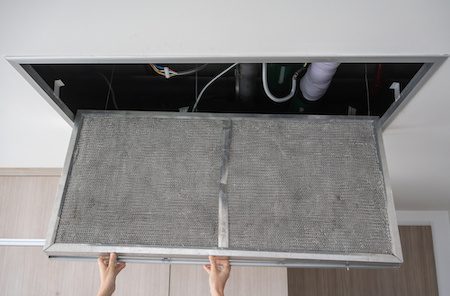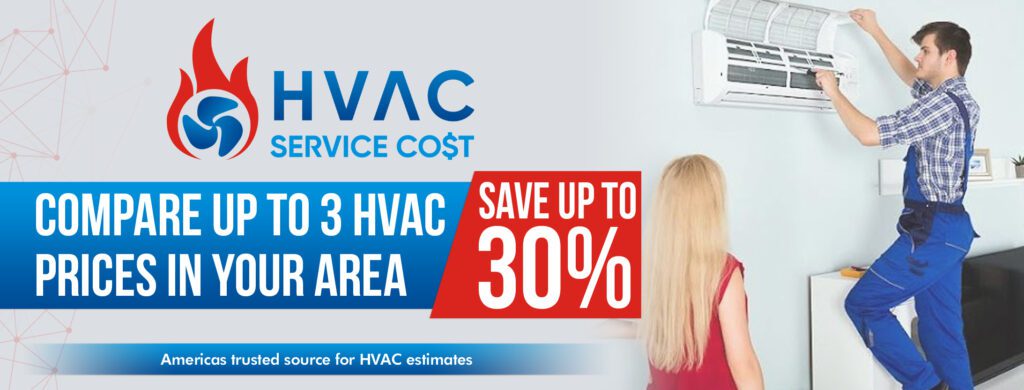
The Link Between Insulation and HVAC Performance
For many homeowners, the relationship between their HVAC (Heating, Ventilation, and Air Conditioning) system and the insulation in their homes might not be immediately clear. However, these two elements of a home are closely intertwined. Proper insulation not only ensures a comfortable living environment but also plays a pivotal role in the performance and efficiency of HVAC systems. Let’s delve deeper into this connection.
The Role of Insulation
Insulation acts as a barrier, limiting the transfer of heat between the inside of your home and the external environment. In simpler terms, during winters, insulation keeps the warmth in, and during summers, it keeps the heat out. The effectiveness of insulation is often measured in R-values, with higher values indicating better insulative properties.
Understanding Insulation: The Silent Guardian of Home Comfort
In the realm of home construction and energy efficiency, insulation often takes a back seat in the minds of homeowners, overshadowed by flashier home upgrades or more overt architectural elements. However, its impact on our daily comfort, the performance of our HVAC systems, and our energy bills is monumental. Let’s demystify insulation by examining what it is and the essential role it plays.
What is Insulation?
At its core, insulation is a material designed to resist the transfer of heat. Different materials have varying degrees of this resistance, and the effectiveness of insulation is often gauged using ‘R-values’. The higher the R-value, the greater the insulative properties of the material.
Insulation materials can be composed of various substances, from traditional fiberglass to contemporary materials like foam. These materials trap small pockets of air or other gases, hindering the flow of heat. This trapped air acts as a barrier, making it harder for heat to pass through the insulation layer.

The Multifaceted Purpose of Insulation
- Temperature Regulation: The primary role of insulation is to maintain a consistent indoor temperature regardless of external climatic conditions. In the winter, insulation helps keep the warmth generated by your heating system inside the home. Conversely, during summer, it prevents the external heat from permeating indoors, helping the space stay cooler.
- Energy Conservation: By regulating the indoor temperature, insulation reduces the need for heating or cooling systems to work excessively. This conservation of energy translates directly into reduced energy bills. According to the U.S. Department of Energy, heating and cooling account for about 50% to 70% of the energy used in the average American home. Proper insulation can dramatically reduce this consumption.
- Condensation Control: Warm air contains more moisture than cold air. In poorly insulated homes, as this warm air comes into contact with cold surfaces, it cools down, and the moisture it carries can condense. This can result in damp walls, ceilings, or floors. Good insulation prevents this temperature differential, reducing the risk of condensation-related issues.
- Acoustic Benefits: While it’s not its primary purpose, insulation also provides sound dampening effects. This means that a well-insulated home can also be quieter, blocking out external noises and ensuring internal sounds don’t easily transfer between rooms.
- Environmental Impact: Reducing energy consumption isn’t just beneficial for your wallet; it’s also good for the planet. Homes that use less energy contribute to reduced greenhouse gas emissions, making insulation an eco-friendly choice.
Insulation might be hidden behind walls, floors, and ceilings, but its role in our homes is palpable every day. It’s the unsung hero that silently works to keep us comfortable, reduce our environmental footprint, and save us money. Every homeowner should recognize and appreciate the importance of proper insulation and consider it a vital aspect of home maintenance and efficiency.
How Insulation Impacts HVAC Performance
Let’s break down the mechanisms of how insulation significantly impacts the performance of HVAC systems:
Reduced Workload on HVAC Systems
- Temperature Stability: Effective insulation maintains a more stable indoor temperature. This means that during cold months, the heat generated by your heating system is retained within the home, and during hot months, the cooler indoor air remains unaffected by the external heat. This stability reduces the need for your HVAC system to frequently cycle on and off, reducing its workload.
- Less Temperature Fluctuation: With a well-insulated home, you’ll notice fewer temperature fluctuations. This means the HVAC system doesn’t have to constantly adjust to shifting temperatures, leading to more efficient operation.
Enhanced Energy Efficiency
- Minimized Energy Loss: Without proper insulation, the energy produced by your HVAC system—whether it be heat in the winter or cool air in the summer—would quickly escape. Insulation acts as a barrier, preventing this energy loss and ensuring that the energy used to heat or cool your home isn’t wasted.
- Lower Energy Bills: Since the HVAC system doesn’t have to work as hard in a well-insulated home, it consumes less power. This efficient operation translates directly into savings on your monthly energy bills.



Increased System Longevity
- Reduced Wear and Tear: An HVAC system that’s constantly running due to poor insulation is prone to quicker wear and tear. Components might need replacement sooner, and the overall lifespan of the system could be shortened. Proper insulation ensures the system runs only when necessary, promoting a longer lifespan.
- Prevention of Overworking: Just like any machine, when an HVAC system is overworked, it’s at a higher risk of malfunctioning. Proper insulation ensures the system operates within its optimal range, reducing the chances of breakdowns.
Enhanced Indoor Comfort
- Consistent Temperatures: Insulation ensures that temperatures remain consistent across different parts of the home. You won’t experience certain rooms being colder or warmer than others, which could otherwise prompt unnecessary adjustments to the HVAC system.
- Reduction in Cold Spots and Drafts: Proper insulation eliminates cold spots and drafts, particularly near windows, doors, and in rooms that are farthest from the HVAC unit. This uniformity ensures the HVAC system doesn’t need to overcompensate for these colder areas.
Improved Humidity Control
- Prevention of Moisture Accumulation: Proper insulation helps in maintaining the right level of indoor humidity. When there’s a significant temperature differential between the indoors and outdoors, it can lead to condensation, especially on windows. This excess moisture can make a home feel colder in the winter or more humid in the summer, causing the HVAC to work harder to compensate.
The efficiency and effectiveness of your HVAC system are closely tied to the quality of insulation in your home. While the HVAC system actively regulates temperature and air quality, insulation serves as the passive protector, ensuring that the environment created by the HVAC is maintained. Investing in proper insulation not only guarantees comfort but also ensures that your HVAC system delivers its best performance throughout its service life.
Enhancing Insulation for Optimal HVAC Performance
- Audit Your Home: Conducting an energy audit can help identify areas where insulation might be lacking or ineffective. This can be particularly useful in older homes where insulation might have settled or deteriorated over time.
- Consider Insulation Type: While traditional fiberglass batts are common, there are other options like spray foam, blown-in cellulose, and rigid foam boards that might offer better insulative properties for certain applications.
- Don’t Forget the Attic: Heat rises, and many homes lose a significant amount of heat through the attic. Ensuring that your attic is well-insulated can make a marked difference in HVAC efficiency.
- Seal and Insulate Ducts: Ducts that run through unconditioned spaces, like basements or attics, can lose a significant amount of heat if they’re not properly sealed and insulated.
- Upgrade Windows and Doors: While not directly related to insulation material, ensuring that windows and doors are energy-efficient can further boost the insulative properties of your home, complementing the effectiveness of your HVAC system.


Evaluating Existing Insulation:
- Home Energy Audit: Consider scheduling a professional energy audit. An auditor can identify areas where insulation might be lacking or where energy leaks are occurring. This comprehensive review gives homeowners a clear picture of where improvements are needed.
- R-Value Review: Understanding the R-value, which measures the resistance of insulation to heat flow, of your current insulation can be insightful. Different regions have recommended R-values based on their climate, so ensure your home meets or exceeds these recommendations.
Types of Insulation:
- Fiberglass Batts: While they are commonly used, it’s crucial to ensure that they fit snugly between wall studs and floor joists. Any gaps can significantly reduce their effectiveness.
- Blown-In Cellulose: This type of insulation is excellent for filling existing walls or tight spaces. Made from recycled paper, it’s treated to be fire-resistant.
- Spray Foam: An increasingly popular option, spray foam expands when applied, filling cracks and crevices. It provides both insulation and air sealing benefits, making it highly effective, especially in tricky spaces like around outlets or in irregularly shaped areas.
- Rigid Foam Boards: These are often used for insulating basements or exterior walls. They provide a high R-value for relatively thinner boards.
Areas of Focus:
- Attic and Roof: Heat rises, making the attic a prime location for heat loss in the winter and heat gain in the summer. Ensure you have a thick layer of insulation in the attic. If you can see the attic floor joists, you probably need more insulation.
- Walls: While insulating existing walls can be more challenging, it’s not impossible. Techniques like blown-in insulation can be used without significantly altering the home’s structure.
- Basements and Crawlspaces: These areas can be significant sources of cold air drafts. Insulating them can not only make your home more comfortable but also prevent cold floors in the winter.
- Ductwork: Ducts carry heated or cooled air throughout the house. If they’re not well-insulated, especially if they pass through unconditioned spaces like attics or basements, you can lose a lot of energy. Sealing and insulating ducts can greatly enhance HVAC efficiency.
Additional Tips:
- Weatherstripping and Caulking: While not insulation in the traditional sense, sealing gaps around windows, doors, and other openings complements insulation by preventing drafts and energy leaks.
- Insulated Doors and Windows: Consider upgrading to double or triple-pane windows and insulated doors. These can dramatically reduce heat transfer, further enhancing the benefits of wall insulation.
- Radiant Barriers: In hotter climates, installing a radiant barrier in your attic can reflect heat, preventing it from entering your living spaces. This can be especially effective in reducing cooling costs.
Enhancing insulation goes beyond just adding more material. It’s about making informed decisions based on your home’s unique needs, the local climate, and the specific challenges you face. By investing in effective insulation and related measures, you not only optimize your HVAC performance but also create a home that’s comfortable, energy-efficient, and environmentally friendly.


Ventilation and Its Role in Insulation:
- Balanced Air Exchange: While insulation is vital for trapping the desired air inside, proper ventilation ensures that there’s a balanced exchange of indoor and outdoor air. This is crucial in preventing moisture accumulation within insulation, which can decrease its efficiency and potentially lead to mold growth.
- Roof Vents: Ensuring your roof has adequate vents can help release the hot air that gathers in the attic, thus preventing it from impacting your home’s internal temperature. In colder climates, this ventilation can also help reduce the risk of ice dam formation on the roof.
Moisture Management:
- Vapor Barriers: These barriers, often made of plastic sheeting, are placed on the warm side of the insulation, usually in walls and attics. They prevent moisture from permeating into the insulation, ensuring it remains effective and dry.
- Ground Covers in Crawlspaces: A simple plastic sheet on the ground of a crawlspace can prevent ground moisture from rising and affecting the insulation and structure above it.
Continuous Maintenance and Upgrades:
- Regular Inspections: Periodically, especially after severe weather conditions, inspect your insulation for any signs of damage or moisture. Catching issues early can save you in energy costs and prevent larger repair expenses down the line.
- Staying Updated: As insulation technology evolves, newer and more efficient products emerge. Stay updated about these advancements. For instance, aerogel and vacuum-insulated panels are newer innovations that offer high R-values despite being thin.
- Environmental Considerations: If you’re looking to be more eco-friendly, consider insulation options like wool or recycled denim. They are sustainable, have decent R-values, and can be just as effective as traditional materials.
Collaborate with Professionals:
- Consultation: If you’re unsure about the type or amount of insulation you need, it’s always a good idea to consult with an insulation professional. They can provide guidance tailored to your home’s specifics.
- Professional Installation: While some homeowners might opt for DIY insulation projects, hiring professionals ensures the job is done correctly and safely, maximizing the benefits of the insulation.
Insulation, while seemingly static, plays a dynamic role in shaping the comfort and energy efficiency of our homes. As with most aspects of home maintenance, it requires attention, knowledge, and sometimes the expertise of professionals. Enhancing your home’s insulation isn’t just about saving on energy bills; it’s about investing in the longevity of your HVAC system, the comfort of your living spaces, and the overall health of your dwelling. Remember, a well-insulated home is a happier, cozier, and more sustainable one.



The Integral Role of HVAC System Maintenance
When we think of our homes, we often visualize the walls, roofs, and floors – the structural components that shield us from the elements. However, it’s the HVAC (Heating, Ventilation, and Air Conditioning) system that genuinely turns these structures into comfortable habitats throughout the changing seasons. Beyond mere comfort, regular HVAC maintenance ensures optimal performance, extended system life, and significant energy savings. Let’s dive deeper into the intricacies of HVAC systems and the significance of their upkeep.
The Complex Anatomy of HVAC Systems:
1. Components & Functionality:
- Heating: This can be achieved through furnaces using fuels like natural gas, oil, or electricity. Alternatively, heat pumps, which transfer heat from one location to another, can be used.
- Cooling: Central air conditioners or heat pumps (in cooling mode) draw heat away from your home, releasing it outdoors and thus cooling the indoor air.
- Ventilation: This involves exchanging indoor air with outdoor air, ensuring that contaminants and stale air are filtered out, promoting a healthier indoor environment.
2. Integration with Home Systems: HVAC isn’t an isolated entity. It interacts with your home’s insulation, windows, and even the direction your home faces (solar orientation). All these factors determine the workload on your HVAC.
The Imperative of Regular Maintenance:
1. Efficiency and Savings: Over time, components can wear out, filters can get clogged, and systems can become uncalibrated. Regular maintenance ensures all parts are in working order, reducing the energy consumption of the system. This efficiency translates directly into savings on your monthly utility bills.
2. Air Quality: As the primary system responsible for circulating air in your home, a poorly maintained HVAC system can spread pollutants and allergens, impacting the health of the inhabitants. Regular cleaning and filter replacements can dramatically improve indoor air quality.
3. System Longevity: Just like a car, regular tune-ups can extend the lifespan of your HVAC system. By addressing small issues before they become major problems, you can avoid costly repairs and prolong the life of your system.
4. Predictable Performance: An unmaintained HVAC system can lead to unexpected breakdowns, leaving you freezing on the coldest winter nights or sweating during summer heatwaves. Regular check-ups reduce these unpredictable hitches.



Tips for Optimal HVAC Health:
1. Seasonal Check-ups: Before the onset of major seasons (winter and summer), have a professional inspect and service your system. This will ensure you’re prepared for extreme temperatures.
2. Filter Replacements: Depending on the type and usage, HVAC filters should be checked monthly and replaced at least every three months. A clean filter not only ensures cleaner air but also reduces strain on the system.
3. Clean the External Units: Outdoor units can get clogged with leaves, dirt, and other debris. Regularly cleaning around and inside these units can help maintain their efficiency.
4. Thermostat Calibration: Ensure that your thermostat is correctly calibrated. Smart thermostats can also be considered, as they learn your habits and adjust heating and cooling in the most efficient way possible.
5. Inspect Ducts & Vents: Ensure that the air ducts are not leaking and are properly insulated. Also, make sure the vents are not obstructed by furniture or curtains.
Your HVAC system is the silent sentinel that stands guard, ensuring that regardless of the chaos of the outside world, your home remains a sanctuary of comfort. By understanding its importance and ensuring its regular upkeep, you not only guarantee consistent comfort but also make a wise financial and health investment. After all, a well-maintained HVAC is a well-maintained home.
The synergy between insulation and HVAC performance is undeniable. By investing in proper insulation, homeowners not only create a comfortable living space but also promote an efficient and long-lasting HVAC system. It’s an investment that pays dividends in comfort, energy savings, and peace of mind. For those looking to optimize their home’s energy efficiency, starting with an evaluation of insulation is a step in the right direction.
Should you ever find yourself in need of HVAC replacement or repair, remember that HVAC Service Cost is here to help. We’re here to help you get comprehensive quotes and connect you with professionals who can restore your sanctuary of comfort. Reach out today, and let us guide you through your HVAC journey.
COMPARE QUOTES NOW


Leave a Reply